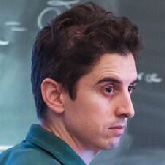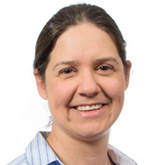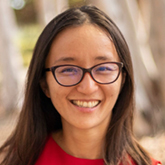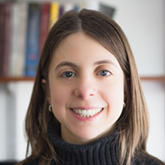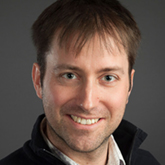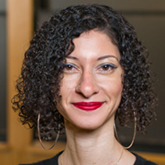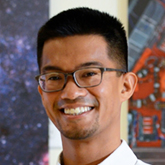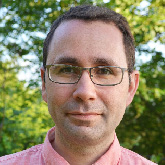Right now could be considered one of the best—and most uncertain—times in theoretical physics. That’s what Symmetry heard in interviews with 10 junior faculty in the field.
After coming of age during the run-up to and first runs of the Large Hadron Collider, these researchers found that the experimental data coming in offered more questions than answers. Yes, the Higgs boson was found, but why was it so much lighter than expected? And where are all the other proposed particles that scientists hypothesized would be found? Also, what the heck constitutes dark matter?
“We are collectively extremely confused about the rules of the game,” says Tim Cohen, assistant professor of physics at the University of Oregon. “It’s up to this new generation to figure out where the new physics is hiding. It’s the thing that terrifies and excites all of us.”
As they begin tenure-track professorships (or have recently gotten tenure), they are moving from young researchers to professors and mentors charged with guiding the physicists of the future. They are thinking about short-term research projects that could solidify their place in the field while also considering projects that could extend beyond their lifetimes.
“It’s a good time to do slightly more out-there things,” says Joe Bramante, assistant professor of physics at Queen’s University. “We’re in the midst of a golden era. The best circumstance would be if we had oodles of new laboratory results to explain. Instead, we don’t have such results and still have to explain things like dark matter. There’s a lot of room for creativity.”
This group is also working to change paradigms within physics, both smashing stereotypes—physicists are not all like characters from the television show The Big Bang Theory, thank you very much—and making the community more welcoming of diversity. Physicists like Chanda Prescod-Weinstein want to not only make their mark in the field but also act as role models for a new generation. “I’m very conscious that I’m the first black woman to hold a position in theoretical cosmology,” she says. “There is an additional pressure to succeed.”
By creating theories and models that could explain results from the past or guide the experiments of the future, this group of physicists often finds themselves collaborating, comparing notes and looking for the next thread of discovery.
“We each experienced the same angst about our careers and about the general direction of our field,” says Flip Tanedo, assistant professor of physics at the University of California, Riverside. “The fact that we were going through this at the same time made it easier to connect and collaborate with each other.”
Clay Cordova
Title/Institution
Long-term member at the Institute for Advanced Study; will begin as an assistant professor of physics at the University of Chicago in the fall
Current scientific focus
Studying quantum field theory, the laws governing the interactions of fundamental constituents of matter. He tries to understand the math behind questions such as: How do systems like quarks and gluons interact, and how can we understand their collective properties like color confinement into mesons and baryons?
Favorite place to think
The Institute for Advanced Study has an afternoon tea time, where he grabs a coffee and a cookie and heads out to a nearby pond to think about a question he’s currently stuck on or to talk it out on a walk with another physicist.
Why he became a theoretical physicist
Although he was interested in science as a kid in New Mexico, he didn’t understand what it meant to be a professional scientist. When his grandmother opened a bed-and-breakfast near Los Alamos National Laboratory, she often hosted physicists who were visiting the lab. He would visit and talk to them about their work. “That planted a little seed that it was possible to be a professional theoretical physicist,” he says.
What’s most surprising about being a theoretical physicist
“Many people picture a lone genius, sitting with a cloud bubble of thought over them, hoping inspiration will strike,” he says. But much of the best work gets done with a small group of collaborators. “When we’re interested in the same idea, but we’re confused on how to get there, we’ll just explain our confusion back and forth and write equations on a blackboard, and maybe over a period of months, we will converge on an idea.”
What he would say to a young person interested in becoming a physicist
“If you’re a novice, you might think you should study an area of physics with established rules. But you should go toward an area that is intellectually messy. You have a good chance of making new rules or doing something fundamental.”
When he’s not considering theoretical physics
He runs long distances. He ran his first marathon last fall and will run the Chicago marathon in October.
Did you know
His brother is also an academic but in a very different field—he is an assistant professor of French literature at Emory University.
Cindy Keeler
Title/Institution
Assistant professor of physics at Arizona State University
Current scientific focus
Thinking about the shape of space-time. She considers ways to probe this idea, whether looking at the theoretical boundaries of space-time to consider what’s inside it or by probing “modes” of space-time to learn about its shape. Black hole collisions like those detected by LIGO could provide measurements of these types of modes.
Favorite place to think
“I don’t seem to have control over when I have good ideas, so I have to always be prepared,” she says. One time she had an idea right before getting on an overseas flight. She spent the entire flight working out the math. The person next to her said, “You should get a PhD for that.” She said, “Well, I already have one!”
What keeps her up at night
The heat death of the universe. What will happen eventually to all the matter, dark matter and energy? Will it spread out enough that nothing interesting will happen anymore?
Why she became a theoretical physicist
She was always interested in science and math, and she used to steal her older sister’s chemistry book to read it on her own. She read about how atoms work and wanted to know more, but the book said, “Any more discussion is beyond the scope of this book.” When she realized that physics was the language of math applied to the universe, she was hooked. “On some level my entire career has been trying to get beyond the scope of that book.”
When she’s not considering theoretical physics
She rock-climbs at her local gym. “It’s nice to break out of my head and use my whole body to do something,” she said. When the gym reorganizes the climbing holds, she must figure out the best combination to complete the climb. “I can solve it in a week, whereas my research problems in physics sometimes take months, years or decades.”
Did you know
She can ride a unicycle and juggle, generally not at the same time. She prefers to juggle with another person, creating interesting throwing patterns. “It’s related to the stuff I like about physics. I like to collaborate and build with other humans.”
Tongyan Lin
Title/Institution
Assistant professor of physics at University of California, San Diego
Current scientific focus
She studies models and theories of dark matter and is currently interested in models of “light dark matter”—dark matter that would have a mass somewhere between 1000th of the mass of an electron up to the mass of a proton.
Favorite place to think
Coffee shops. “I can be very picky,” she says. The right cafes have the right mix of ambient music and background chatter, and, of course, good coffee. “It’s a place where ideas can bubble up, and I can think about them for a while before another idea comes up.”
What keeps her up at night
She says she sleeps well in order to tackle the next day’s problems, but “there are a ton of dark matter candidates out there, so it’s a really interesting time. We’re trying to explore as many candidates as possible.”
Why she became a theoretical physicist
She always enjoyed physics and gravitated toward the approaches of theoretical physics. “I’ve always been more comfortable working out ideas with a pen and paper,” she says. “That feels natural to me.”
What’s surprising about being a theoretical physicist
It’s not just sitting in a room, thinking, she says. She spends much of her time traveling and giving presentations, and having productive discussions with other physicists. “Some people think doing theoretical physics is about doing the hardest math problem,” she says. “Sometimes it is, but some very good theoretical physics is good because it’s creative or pushes some new direction.”
When she’s not considering theoretical physics
Many physicists say they are always working, because they are always thinking about problems or new ideas. “That’s why I get outdoors,” she says. Surfing and rock climbing allow her to clear her mind. “The visceral fear of falling really eliminates any other thoughts.”
Mariangela Lisanti
Title/Institution
Associate professor of physics at Princeton University
Current scientific focus
Trying to understand the nature of dark matter—what its properties might be and how experimentalists could potentially test for it. Recently she has been using information about the motions of stars in our galaxy to build a map of how dark matter might be distributed. She is studying numerical simulations of how this might work, based on the early formation of the galaxy, and then comparing them to data from the Gaia satellite.
How she explains her job to family and friends
While most people are familiar with the periodic table, many don’t know that physicists believe that constitutes only 15% of everything in the universe. “I usually tell them that I spend most of my day trying to understand what the other 85% is,” she says.
What keeps her up at night
Wondering whether she and her colleagues are looking for dark matter in the wrong places or in the wrong ways. Although there is a general consensus that dark matter is a particle, they still don’t know the mass range of that particle or whether it’s something entirely different. “There are moments where it all feels quite overwhelming,” she says.
Why she became a theoretical physicist
She started participating in science fairs in middle school, and her parents were baffled at their dining room table covered in petri dishes. In high school she emailed dozens of university labs, looking for a chance to conduct research. A lab at Yale took her in, and she went to college convinced she was meant to study condensed matter physics. A professor took her aside and encouraged her to become a theoretical physicist, but she couldn’t understand how that would translate to a career. Once she made the jump, though, she was hooked. “I like being able to ask really big questions and have the freedom to think about them,” she says.
When she’s not considering theoretical physics
She likes to do yoga and go hiking, especially with other physicists at conferences.
Did you know
Her parents are from Italy, and she and her Italian-American family all love food, especially the traditional Christmas Eve dinner of seven fishes. “Anything related to cooking or exploring new kinds of foods is my thing,” she says.
Joe Bramante
Title/Institution
Assistant professor of physics at Queen’s University and with the Arthur B. McDonald Canadian Astroparticle Physics Research Institute
Current scientific focus
Figuring out the nature of dark matter and its interactions with known particles. He’s developed new models for looking for signals of dark matter in underground experiments, as well as astrophysical models that propose neutron stars as dark matter collectors.
Favorite place to think
Taking long walks around bodies of water. His career has taken him to institutions around North America, and “every institute I’ve worked at has had a really good lake nearby. Walking there just seems to free up my mind to think.”
How he explains his job to family and friends
He tells them he looks for what sort of new particles might exist in the universe and tries to find ways to find them, often using the most extreme environments, including dense environments (neutron stars), cold and isolated environments (underground detectors) and high-energy environments (particle colliders).
What keeps him up at night
The cosmological constant problem (a problem that arises when you combine quantum mechanics and general relativity to predict the size of vacuum energy in the universe, which shows that the universe should be violently ripping apart) and “how one could possibly come to grips with that with any sort of observations in my lifetime. There is really something basic about our understanding of quantum mechanics, general relativity or cosmology that needs fixing.”
Why he became a theoretical physicist
When he was young, he learned about circuit design from his father, who worked for IBM. He found himself considering how he could arrange atoms in the smallest possible circuits. But in high school, he became much more interested in philosophy, creative writing and math. It wasn’t until he took a quantum theory course in college that he fell in love with physics.
When he’s not considering theoretical physics
He heads to the local climbing gym, a popular hangout among local physicists. He also plays Gloomhaven, a fantasy board game, with his research group.
Did you know
In high school he spent a year in Alaska helping get his uncle’s sled dogs ready to run the Iditarod. “I got offers to start leading tourist sled dog tours, and I could have got sucked into that and stayed in Alaska,” he says.
Chanda
Prescod-Weinstein
Title/Institution
Assistant professor of physics and astronomy at University of New Hampshire. She is also part of the core faculty in women’s studies.
Current scientific focus
Trying to understand dark matter, focusing specifically on the idea of “light dark matter,” proposed dark-matter particles with low masses. She’s especially interested in hypothesized particles called axions and whether they might be a candidate for dark matter.
Favorite place to think
Her large oak dining table, which allows her to spread out the pages she is writing on. (She once spent so much time writing out and working on a problem that she developed a thumb injury. She now uses gel pens on glossy paper.)
How she explains her job to family and friends
“I say I do math all day. The biggest struggle is convincing people I’m not a rocket scientist.”
Why she became a theoretical physicist
Growing up in east Los Angeles, she always loved math—at six years old she was writing out her times tables—but when her mom took her to see the documentary A Brief History of Time, she saw what it meant to be a physicist. “What attracted me was that it was removed from the problems of society—from the gang violence I saw in my neighborhood,” she says. She found an email address for Stephen Hawking and sent him a note, asking how to become a physicist. One of his graduate students replied and told her she needed to earn a top undergraduate degree so she could earn a PhD in the field. “So that’s what I did,” she says.
What has surprised her about being a theoretical physicist
How social the process is. “I thought it was going to be about sitting around and thinking about ideas, but there’s a huge element that involves building relationships with other people. That’s actually how the work gets done.”
When she’s not considering theoretical physics
She writes about problems about representation within the physics community and is active on the topic on social media. She’s also a certified classical Pilates instructor.
Did you know
Every year, she attends the Star Trek convention in Las Vegas. This year, she will be a part of the convention’s Star Fleet Cheer Squad. “I have a pretty dorky sense of humor,” she says.
Flip Tanedo
Title/Institution
Assistant professor of physics at the University of California, Riverside
Current scientific focus
Building models of dark matter, looking at both astrophysical possibilities (dark matter in neutron stars) as well as hypothetical particles such as monopoles. “Dark matter is an excuse to play with old theories in a new light,” he says.
Favorite place to think
Swimming pools. It helps clear his mind from the “pent-up stress of going to battle with tedious calculations.” But he doesn’t clear his mind fully—to count laps, he assigns a particle to each lap, then thinks about how that particle might interact with dark matter as he swims.
How he explains his job to family and friends
“My friends often tease me and think that my job as a theorist is to sit in a big comfy chair quietly until I suddenly have a ‘eureka’ moment and then write something brilliant on the board,” he says. “But the stereotypes are totally off. Physics is a creative, collaborative, human endeavor like art or music.”
Why he became a theoretical physicist
He fell in love with physics after reading the book The Physics of Star Trek in high school. He realized that physicists get to play and be creative with the rules of the universe.
When he’s not considering theoretical physics
He’s helping break down barriers in the physics community. As one of the few physics professors of Filipino descent, he understands the value of having a diversity of thought when considering complex problems. “Three people coming from different backgrounds will come up with way more interesting and creative ideas than this myth of a single, brilliant physicist,” he says. “Bringing more diversity into physics will only make the field more fun.”
Did you know
This summer, he attended a physics conference in the Philippines to build new connections with the Philippine's National Institute of Physics as they seek to build a new particle physics research group.
Tim Cohen
Title/Institution
Assistant professor of physics at the University of Oregon
Current scientific focus
As a particle phenomenologist, Cohen studies physics beyond the Standard Model, looking for unexpected ideas in experimental data. He also tries to invent models to help inform how to design new experimental approaches. One project is looking at data from the Gaia satellite for patterns that could be traces of dark matter.
Favorite place to think
Cohen is a jazz drummer and often lets loose at the end of the day on his drum set. He practices free improvisation, creating music without any preconceived notions. “It’s a very meditative place for me,” he says.
What keeps him up at night
Though he and his peers are confident physics beyond the Standard Model exists, they are “collectively extremely confused about what the rules of the game are. We don’t really know the right rock to look under. That also makes it a wonderful time to be a physicist.”
What has surprised him about what it’s like to be a theoretical physicist
“Physics is extremely social,” he says. “This field is full of wonderful people, and some of the best physics ideas happen as a consequence of hanging out late into the evening.”
Did you know
Cohen and his father attended college at the University of Alabama, Huntsville together. His father, a cabinet maker, was looking for a new career path and had never gone to college. The two took a half a dozen classes together, driving Cohen’s mother to distraction when they did their calculus homework together at night. His father got a degree in electrical engineering and had a successful second career as an electrical engineer.
Jiji Fan
Title/Institution
Assistant professor of physics at Brown University
Current scientific focus
Trying to understand why the Higgs boson has the mass that it has. She’s constructing models to explain the origin of the Higgs’ mass while exploring cosmological evolutions associated with it. She’s also interested in dark matter and is exploring new theoretical ideas to better understand it.
Favorite place to think
“I’m just happy to have some quiet personal space,” she says.
How she explains his job to family and friends
Her parents give what she thinks is an interesting explanation: They tell her other relatives that their daughter is a science fiction writer. “It’s true, to a certain extent,” she says. “Inventions that show up in science fiction often become reality. We’re working hard to come up with more and more ideas until one of our ideas turns out to be true.”
Why she became a theoretical physicist
She was always interested in math but she ultimately found physics to be more satisfying. “Physics has a direct connection to the world,” she says. “I can still do math in a way that’s relevant to nature.”
What she found surprising about being a theoretical physicist
It’s not surprising to her, but others find it surprising that she and her colleagues “are not as nerdy as Sheldon from The Big Bang Theory,” she says.
When she’s not considering theoretical physics
She enjoys walking and hiking, but she can most often be found curled up with a detective novel, whether it’s a classic from Agatha Christie or a more recent page-turner from Japanese author Keigo Higashino.
Did you know
“I’m sort of a foodie,” she says. When getting together with friends, she enjoys cooking for them. Her signature dish? “I think I’m pretty good at making meatballs.”
Fernando Febres Cordero
Title/Institution
Visiting professor at the University of Freiburg and associate professor of physics at Florida State University
Current scientific focus
As a particle phenomenologist, he studies signals found in experiments at the Large Hadron Collider to search for new clues about the universe. He is currently using calculations and modeling to try to understand complex processes related to the Higgs boson.
Favorite place to think
He prefers to think with his collaborators and group members. “It’s true that you can sit by yourself to think of solutions, but more eyes can see better. You have to work together to be creative to find new ways to reach information that has been so far inaccessible.” When he does need a place to work, he prefers public libraries. “You’re surrounded by people who are thinking about very different things,” he says.
How he explains his job to family and friends
“I usually tell them I’m after fingerprints of new particles,” he says. “I want to know why things are the way they are, and experiments like the LHC are a little window into a new energy spectrum that we have never seen before.”
Why he became a theoretical physicist
He was always interested in math and found that physics gave him a chance to be a constant learner. “Every time you understand something and become comfortable with it, you move forward in a new direction and try a new problem,” he says. “We have math and we have nature, and it’s really crazy that sometimes you can make connections between the two. I like this game of trying to describe something outside of our minds.”
When he’s not considering theoretical physics
As a child in Venezuela he studied classical violin, and later tried his hand at different genres, like fiddling or mariachi. “It’s important to have a break from physics. Otherwise your brain just collapses into a little box of the particular thing you are thinking about,” he says.
Did you know
He is a big fan of the strategy board game Go and often spends time on the weekends playing it in clubs.




